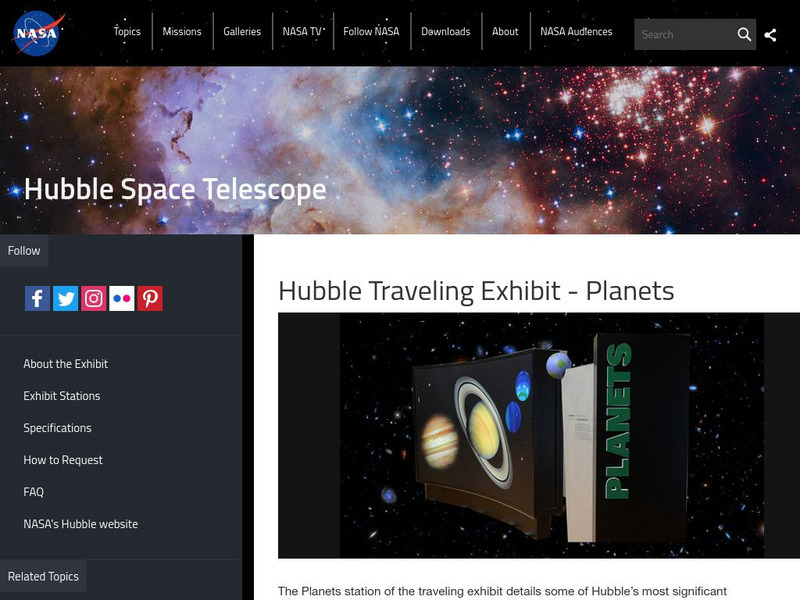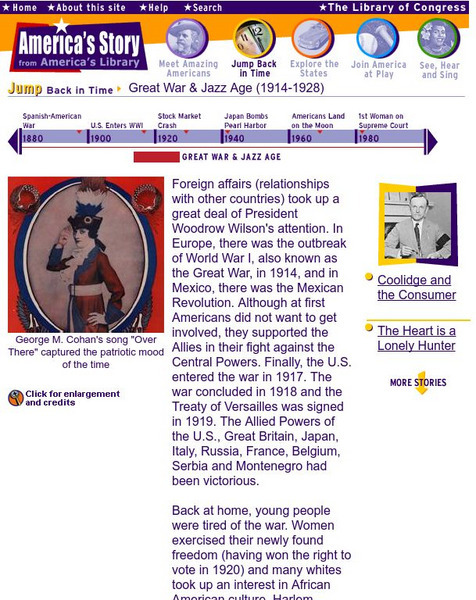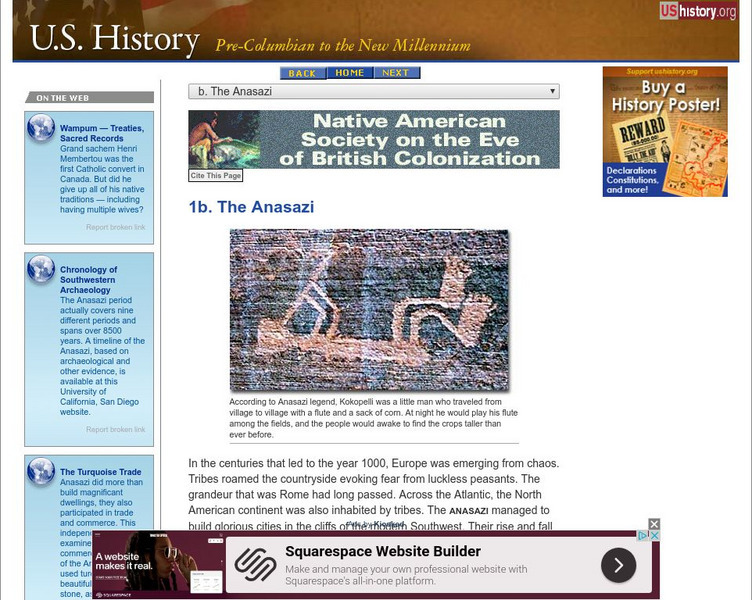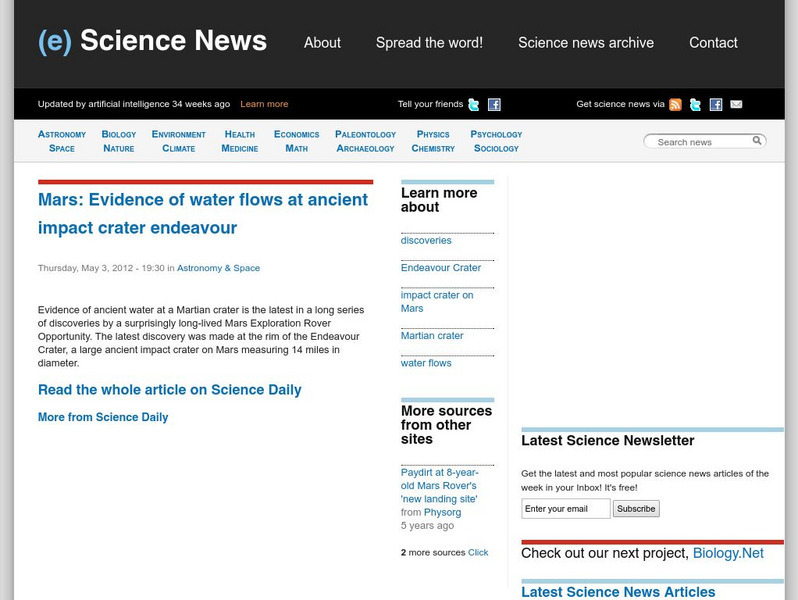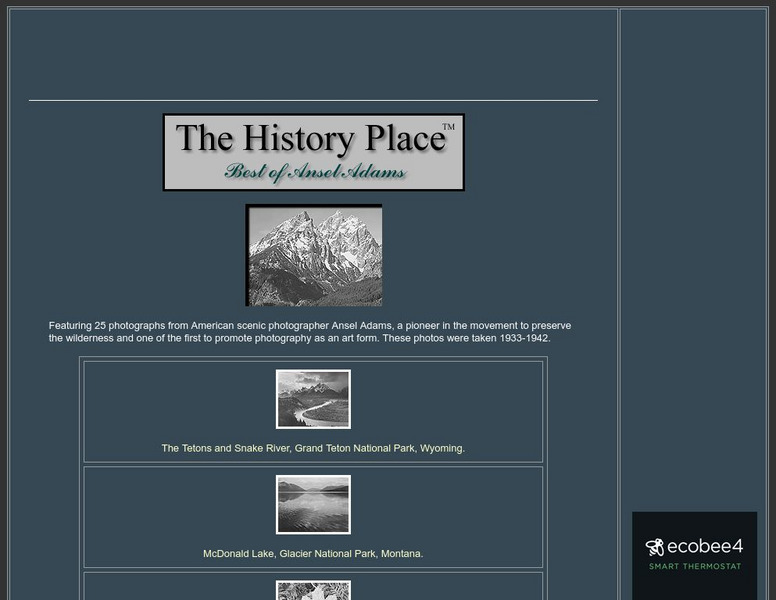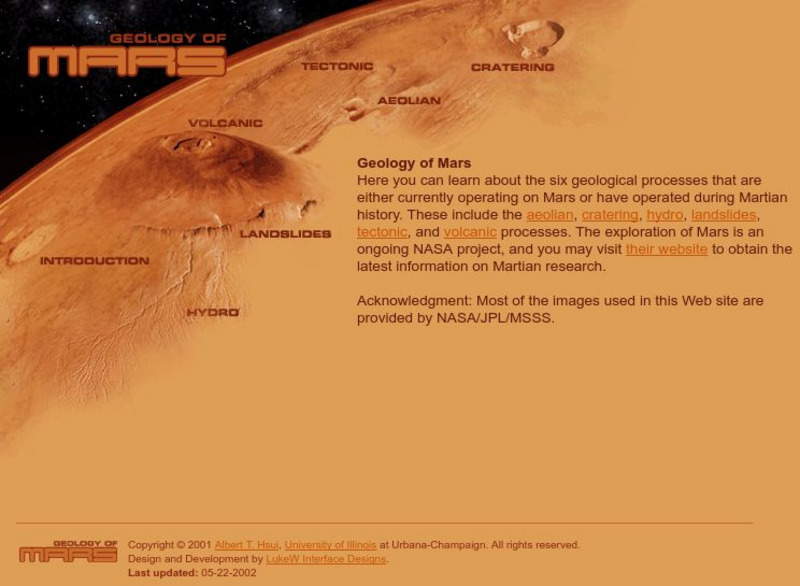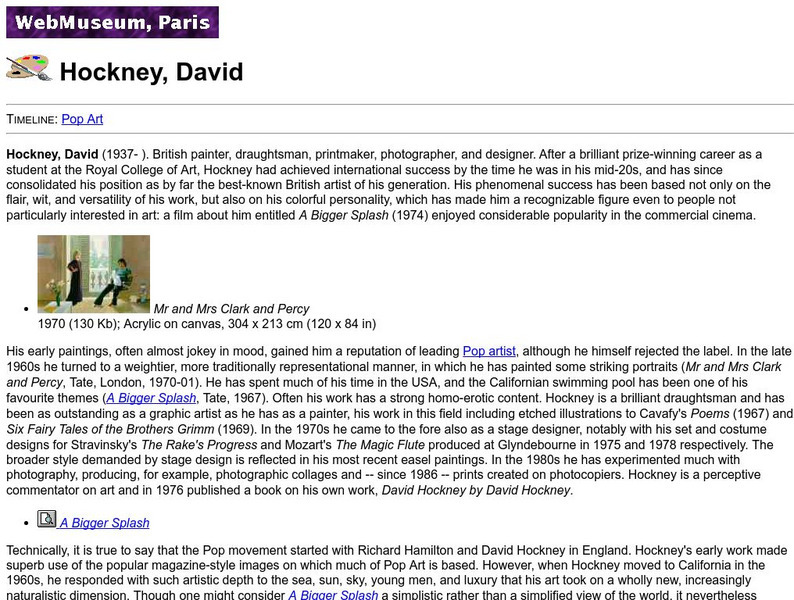Space Telescope Science Institute
Nasa: Hubble Traveling Exhibit: Planets
At this site from HubbleSite you can learn everything you wanted to know about planets like what is the weather on Mars, what is the black eye on Jupiter? Site also provides links to information on the telescope, the rest of the planets,...
eSchool Today
E School Today: Landforms
Understand the formation and geology of different landforms around the Earth.
Kenyon College
Hypertext Academic Projects: Large Dams in the Western United States
What is good, bad, and next for large dams in the United States? Examine biological and ecological, sociological and cultural, legal and political, and economic effects of building a dam.
Library of Congress
Loc: America's Story: Great War & Jazz Age (1914 1928)
This Library of Congress time-line series surveys World War I and the Jazz Age. When World War I broke out in Europe, many changes were going on in the United States. Women were voting for the first time and African-American culture was...
Independence Hall Association
U.s. History: The Anasazi
The Anasazi, the "ancient ones," were an important group among the early Southwest Indians. Read a description of their culture, housing, arts, and possible reasons for their disappearance.
CK-12 Foundation
Ck 12: Earth Science: Principles of Relative Dating
[Free Registration/Login may be required to access all resource tools.] Introduces Steno's laws, which allow scientists to decipher the geological events that occurred and the order in which they took place, including how the relative...
Smithsonian Institution
National Museum of Natural History: Search the Giant Squid
This site explores, in detail, what is known about the Giant Squid, and current efforts to uncover the squid in its natural habitat.
CK-12 Foundation
Ck 12: Second Grade Science
This customizable digital textbook covers topics related to second-grade science. It is Next Generation Science Standards (NGSS) aligned.
Khan Academy
Khan Academy: Native American Culture of the Southwest
This article discusses the Ancestral Pueblo people who lived in the southwestern region of the modern United States; they constructed elaborate buildings and began the American farming tradition.
Blackdog Media
Classic Reader: Wildfire by Zane Grey
Read the full text of one of the best selling books of 1917 "Wildfire" by Zane Grey. This American western consists of danger, love, and beautiful imagery of the western plains and canyons.
Other
Guatemala Geography
Description of the mountains and canyons of Guatemala as well as the rainforest climate.
ClassFlow
Class Flow: Geographic Terms
[Free Registration/Login Required] These five Activote questions will help determine if students can identify major geographic features to include fjords, canyons, cliffs, channels, sea, bay, and isthmus.
Other
News in Science: Evidence of Water Flows on Mars
From ABC News in Science, Irene Klotz's article examines a network of canyons and riverbeds on Mars's surface which, according to scientists, may have been home to certain "microbial life."
Smithsonian Institution
National Museum of Natural History: American Mammals: Ringtail
Ringtails are nocturnal, cat-sized carnivores. They are good climbers and are found in habitats that range from dry canyons to wet woodlands, in highland and lowland terrain. Learn more about the Bassariscus astutus, more commonly known...
Smithsonian Institution
National Museum of Natural History: American Mammals: Rock Squirrel
Rock squirrels, with their long, bushy tails, look very much like tree squirrels, but seldom climb trees. They are most commonly found in rocky habitats: canyons, cliffs, and hillsides. Learn more about the Spermophilus variegatus, more...
Smithsonian Institution
National Museum of Natural History: American Mammals: Rock Pocket Mouse
As their name indicates, Rock Pocket Mice dwell in rocky habitats, and only rarely live in areas with sandy or silty soils. Their inconspicuous burrows are located near or under rocks, in rocky gulches or canyons, or near boulders. Learn...
Smithsonian Institution
National Museum of Natural History: American Mammals: Ghost Faced Bat
Ghost-faced bats forage exclusively on large-bodied moths, and are strong, fast fliers. They spend their days in caves or abandoned mine shafts, and emerge soon after dark to fly to the arroyos and canyons where they forage. Learn more...
Smithsonian Institution
National Museum of Natural History: American Mammals: Greater Bonneted Bat
Greater Bonneted Bats live in rugged, rocky canyons typical of the arid Southwest, where they inhabit crevices in vertical cliffs. Because of their relatively large body size and narrow wings, these bats are unable to take off from a...
Varsity Tutors
Varsity Tutors: Web English Teacher: Gary Paulsen Lesson Plans
This resource focuses on several of Gary Paulsen's novels. There are resources at the different links featuring lesson plans, activities, teaching guides and more.
Science Struck
Science Struck: Types of Landforms
Describes different landform types and their features. includes many good quality photographs.
The History Place
The History Place: Best of Ansel Adams
Here at "The History Place" is an online exhibit of 25 black and white photographs by Ansel Adams. A very interesting place to view his best work, and worth checking out.
Other
Luke W Interface Designs: Geology of Mars
Learn about six geological processes from Luke W Interface Designs that are happening or have happened on Mars. Ex: aeloian, cratering, landslides, volcanic, and more.
ibiblio
Ibiblio: Web Museum: David Hockney
A biography of David Hockney, Pop artist. Examples of his work with some explanation. There is a link to a short discussion on the Pop movement.
Other
Ellen's Place: Thomas Moran, Artist of the Mountains
Biographical overview of Thomas Moran, renowned artist of western landscape paintings. Includes gallery of artwork.
Other popular searches
- Grand Canyon
- Sabino Canyon
- Canyons Gary Paulsen
- Wind Erosion Grand Canyon
- Hudson Canyon
- Bryce Canyon Lodge
- The Grand Canyon
- Canyons by Gary Paulsen
- Geology and Grand Canyon
- Glen Canyon Dam
- Bryce Canyon
- Erosion Grand Canyon
